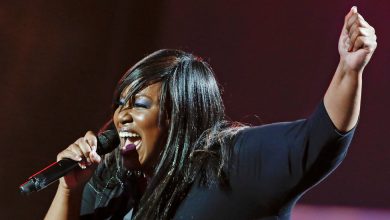This Is Why I Hate Banned Books Week

Walk past any bookstore or library in America this week, and you are likely to find a sign exhorting you to “Read a Banned Book.”
Which one, I always find myself wondering? A Roman Catholic missal, which was illegal to print or possess in Elizabethan England? “The Protocols of the Elders of Zion,” whose recent Italian publisher was sentenced in 2010 to six months in prison and fined $2,000? Ryan Anderson’s critique of the transgender movement, “When Harry Became Sally,” which is among the books prohibited from sale on Amazon, whose dominance of the book trade rivals that of most censorship regimes throughout history?
No, this is not the contraband the bookstores and libraries have in mind.
Americans have found themselves subjected to the vague inducement to read a “banned” book since 1982, when the American Library Association and other groups began promoting Banned Books Week, a cloying festival of liberal self-aggrandizement annually celebrated (if that is the right verb) by publishers and booksellers. This year it runs from Oct. 1 through Oct. 7.
Banned Books Week is, or should be, eminently mockable. Its proponents trade on the moral currency of defiance (“See how brave we are, inviting people to read these daring books!”) but in practice they are doing the opposite — attempting to reify a consensus.
Take a look at the “most banned and challenged” books from 2010 to 2019, according to the American Library Association. Many are war horses of junior-high English, with millions of copies in print: “To Kill a Mockingbird,” “Of Mice and Men,” “1984.” Others are best-selling fantasy novels like “The Handmaid’s Tale” and “The Hunger Games,” which have been made into wildly popular movies and TV shows. The list for 2022 is dominated by politically inflected, sexually explicit coming-of-age stories (“Gender Queer,” “Flamer”), often in comic-book form or otherwise aimed at young adults, many of which have made the New York Times best-seller list.
These are hardly pariah texts. In zero cases since the advent of Banned Books Week has a local or state ordinance been passed in this country that forbids the sale or general possession of any of the books in question. They have not been banned in the sense that, say, many of the works of the historian Frank Dikötter, the author of “Mao’s Great Famine,” are banned in mainland China.
What the American Library Association means when it implies that a book has been banned is that, having typically been purchased with public funds by a library or school, it has subsequently been “challenged” — a ludicrous term of art that can designate something as innocuous as being the subject of a single critical remark by a patron or a parent. If, after this challenge, a book is withdrawn from the library, or if access to it is restricted in some other way, or even if it remains in the collection, it now belongs to Banned Books Week.
This is, by any reckoning, an absurd definition of a ban. Regardless of whether administrators wish to acknowledge it, libraries are beholden to the communities they ostensibly serve (and on which they rely for funding) and their prevailing values. When “parents’ rights” groups object to the inclusion of sexually explicit books in public or school libraries — while often noting, correctly, that these books remain available in bookstores and online — they are engaged in fundamentally the same activity as their counterparts lobbying for the inclusion of such recent classics as “Worm Loves Worm.”
After all, making room on the shelf involves sacrificing something you value less. Libraries are restricted by considerations of physical space (as we are frequently reminded when they discard older books without regard for their literary merit). It is impossible for any public library to own every book, or even a majority of worthwhile ones. If the mere fact of a book’s being unavailable in a given library is tantamount to its banning, then virtually all of the many hundreds of thousands of books published in America each year have fallen afoul of a censorship regime.
Consider what gets left out of your standard anti-censorship success story. A few years ago, in Ruston, La., the Lincoln Parish Library removed several children’s books, including those with L.G.B.T.Q. themes, from general circulation. (These books became available to children only with permission from their parents.) A triumphant campaign in 2020 by the National Coalition Against Censorship led to the return of the books to general circulation.
In a statement endorsed by groups as varied as the American Library Association and the Unitarian Universalist Church, the coalition has claimed that such removals from libraries “not only violate the rights to freedom of expression and information of all community members, protected under the First Amendment, they endanger the well-being of the country’s most precious resource: its youth.”
Stirring stuff, no doubt. But where, one wonders, are the letters asking why in the library’s online catalog there are no copies of “The Power and the Glory,” no “Don Quixote,” none of Anthony Trollope’s novels? And why are the works of Martin Heidegger and Ludwig Wittgenstein, the two most influential philosophers of the 20th century, absent? Or, sticking with children’s literature, where is E. Nesbit’s classic “Five Children and It” and Charles and Mary Lamb’s immortal “Tales From Shakespeare”? What about “Ulysses,” the subject of the most important obscenity trial of the last century? Does its absence mean that the novel has, in effect, been “banned” again?
One can certainly second-guess the wisdom of curatorial decisions made by the Lincoln Parish Library, but it’s disingenuous to do so in the name of “freedom of expression and information.” When challenging a book — that is, assessing it and perhaps arriving at a low estimation of its value — becomes synonymous with endangering children, what is being articulated is a preferred mode of engagement with texts that is essentially totalitarian. The only books whose authors have not intended them to be challenged are works of propaganda, which, no doubt unwittingly, is how the boosters of many contemporary would-be banned books seem to regard them.
This attitude toward reading — in which the only well-meaning response to a text is uncritical approbation, and anything else is tantamount to censorship — is not only disingenuous but ultimately, I think, also hostile to literature itself. If no book invites our disapprobation, what is the value of our esteem? Having renounced our ability to issue moral verdicts, we may find ourselves incapable of reaching aesthetic ones as well, and of exercising the critical faculties that both require.
In a lyric poem with no obviously discernible ideological content, such as Algernon Charles Swinburne’s “Hendecasyllabics,” there are lines for which I feel I would be willing to die, though I cannot imagine having any abstract political right to them (much less offering some kind of utilitarian defense of their value), any more than I could hope to satisfy a philistine school board member who objected to “In the month of the long decline of roses.”
Which is why, instead of being subjected to National Doughnut Day-style literature campaigns, Americans would be better off finding themselves forced to reckon with the question of why reading should necessarily be invested with any kind of inherent public meaning. Is enjoying a novel or a biography an act of performative box-ticking comparable to flying the Ukrainian flag or wearing a MAGA cap? If it is, the enemies of literature have already won.
The Times is committed to publishing a diversity of letters to the editor. We’d like to hear what you think about this or any of our articles. Here are some tips. And here’s our email: [email protected].
Follow The New York Times Opinion section on Facebook, Twitter (@NYTopinion) and Instagram.



